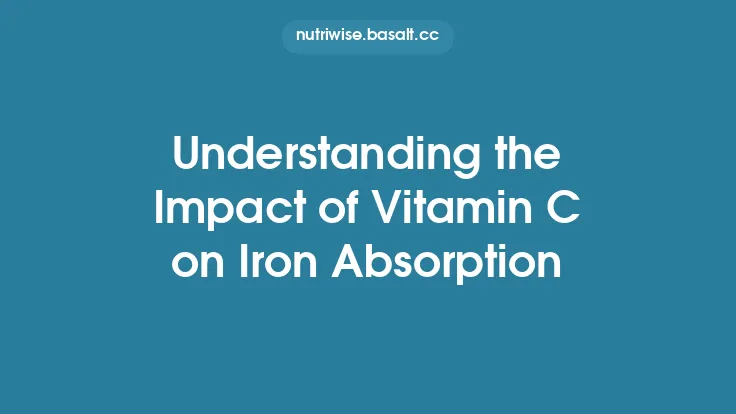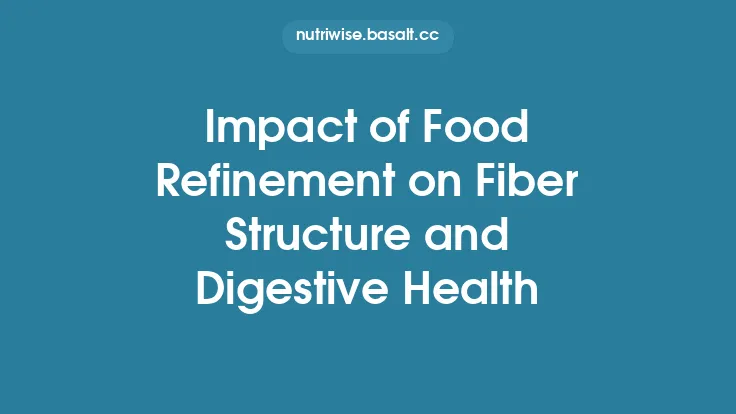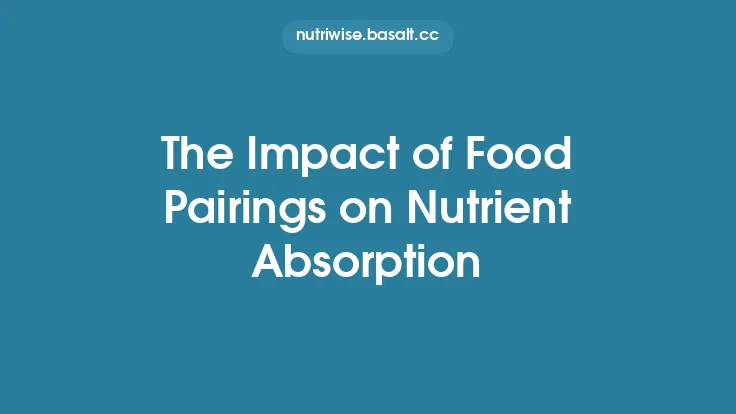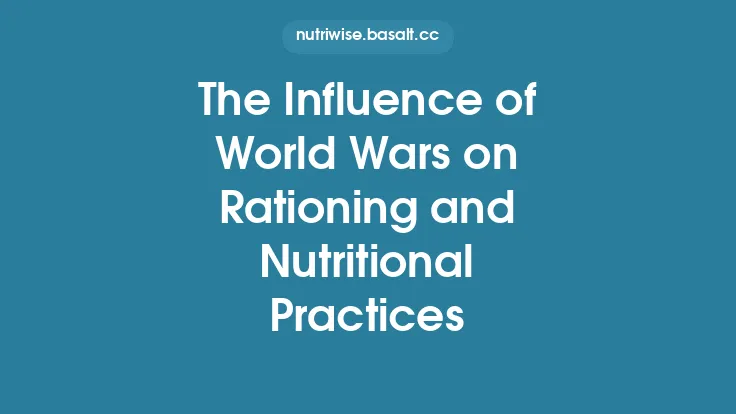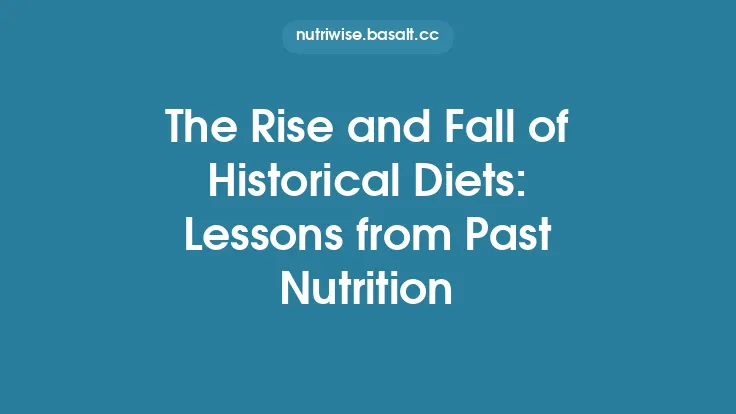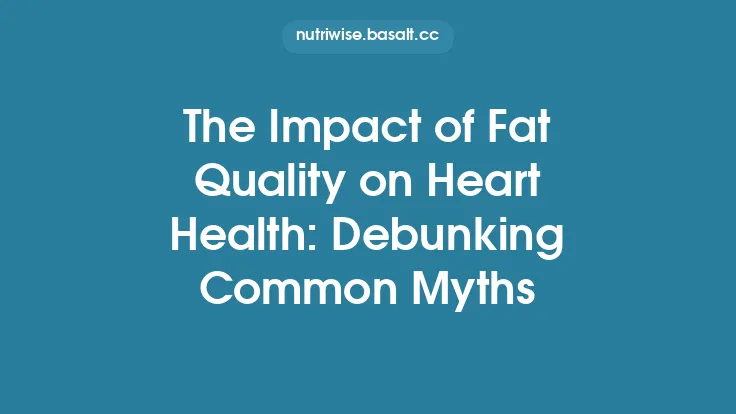Fruit and vegetable consumption remains a cornerstone of a healthy diet, yet many populations fall short of recommended intake levels. Economic incentives, particularly subsidies, have emerged as a policy lever to bridge this gap. By lowering the retail price of fresh produce, subsidies aim to make nutrient‑dense foods more accessible, especially for low‑income households. This article examines the mechanisms through which subsidies operate, reviews the empirical evidence on their effectiveness, explores methodological considerations in evaluating impact, and discusses practical implications for policymakers and public health practitioners.
The Rationale Behind Produce Subsidies
Economic Theory of Price Elasticity
Consumer demand for food items is sensitive to price changes, a relationship captured by price elasticity of demand. Fresh fruits and vegetables typically exhibit a modestly elastic demand (elasticity estimates ranging from ‑0.3 to ‑0.7 in high‑income settings). This means that a 10 % reduction in price can lead to a 3–7 % increase in quantity purchased, assuming other factors remain constant. Subsidies exploit this elasticity by directly reducing the consumer price, thereby encouraging higher consumption.
Addressing Socio‑Economic Disparities
Low‑income groups often allocate a larger share of their budget to energy‑dense, nutrient‑poor foods because these items are cheaper per calorie. Subsidies can shift the relative cost advantage toward fruits and vegetables, narrowing the affordability gap. Moreover, subsidies can be targeted (e.g., through vouchers or SNAP‑linked incentives) to ensure that the most vulnerable populations benefit.
Aligning Agricultural Incentives with Public Health Goals
Historically, many agricultural support programs have favored commodity crops (corn, soy, wheat) that are less directly linked to dietary quality. Introducing or expanding subsidies for horticultural crops reorients fiscal policy toward foods that contribute to micronutrient adequacy and chronic disease prevention.
Types of Subsidy Mechanisms
| Mechanism | Description | Typical Implementation |
|---|---|---|
| Direct Price Reductions | Wholesale or retail price cuts passed directly to consumers. | Government contracts with producers or retailers to lower margins. |
| Voucher Programs | Fixed‑value coupons redeemable for eligible produce. | Integrated with existing assistance programs (e.g., SNAP, WIC). |
| Tax Credits for Producers | Financial incentives for growers to increase fruit/vegetable output, indirectly lowering market price. | Crop‑specific credits, cost‑share for sustainable practices. |
| Rebate Schemes | Post‑purchase refunds based on documented purchases. | Digital receipt verification, mobile app platforms. |
| Supply‑Side Grants | Funding for infrastructure (e.g., cold storage, distribution) that reduces logistical costs. | Grants to cooperatives, farmer‑markets, or community hubs. |
Each mechanism carries distinct administrative costs, eligibility criteria, and potential for market distortion. A mixed‑approach strategy—combining supply‑side and demand‑side incentives—often yields the most robust outcomes.
Empirical Evidence on Consumption Outcomes
Randomized Controlled Trials (RCTs)
- US SNAP Produce Voucher Trials: Multi‑site RCTs have demonstrated a 0.3–0.5 cup‑day increase in fruit and vegetable intake among participants receiving a $20–$40 monthly voucher, relative to control groups.
- European Voucher Pilots: In the United Kingdom, a voucher program targeting low‑income families resulted in a 12 % rise in weekly fresh produce purchases, measured via scanner data.
Quasi‑Experimental Studies
- Policy Change Analyses: Natural experiments following the introduction of a national fruit and vegetable subsidy in Japan (2009) showed a sustained 8 % increase in per‑capita consumption over five years, after adjusting for income and demographic trends.
- Difference‑in‑Differences (DiD) Designs: Studies comparing regions with and without subsidy implementation in Brazil revealed a 0.2‑serving per day uplift in vegetable intake among adults, with stronger effects observed in urban low‑income districts.
Meta‑Analytic Findings
A recent meta‑analysis of 27 subsidy‑related interventions reported an average effect size (Cohen’s d) of 0.28 for fruit and vegetable consumption, translating to roughly a 0.4‑cup increase per day. Effect heterogeneity was linked to subsidy magnitude, duration, and integration with nutrition education.
Methodological Considerations in Impact Evaluation
Measuring Consumption
- 24‑Hour Recalls vs. Food Frequency Questionnaires (FFQs): While 24‑hour recalls provide precise short‑term intake data, FFQs capture habitual patterns. Combining both methods can improve validity.
- Objective Purchase Data: Loyalty‑card scanner data and receipt‑based verification reduce self‑report bias, especially in voucher or rebate programs.
Accounting for Substitution Effects
Subsidies may induce consumers to replace other foods (e.g., refined grains, processed snacks) with produce, amplifying health benefits. However, some studies observe “budget‑reallocation” where total food expenditure remains constant, limiting net caloric impact. Econometric models that incorporate cross‑price elasticities help disentangle these dynamics.
Longitudinal Follow‑Up
Short‑term consumption spikes may not persist. Longitudinal cohorts (≥2 years) are essential to assess habit formation, potential “price‑elasticity decay,” and downstream health outcomes (e.g., blood pressure, BMI).
Equity Analyses
Disaggregating results by income, race/ethnicity, and geographic location uncovers differential impacts. Equity‑focused metrics (e.g., concentration index) are recommended to ensure that subsidies do not inadvertently widen disparities.
Health and Economic Implications
Chronic Disease Prevention
Higher fruit and vegetable intake is associated with reduced risk of cardiovascular disease, certain cancers, and type 2 diabetes. Modeling studies estimate that a 0.5‑cup daily increase could avert 1–2 % of incident coronary heart disease cases in a given population, translating into substantial healthcare cost savings.
Cost‑Effectiveness
When expressed as cost per additional serving consumed, subsidy programs typically range from $0.30 to $0.70 per serving, comparable to or lower than many pharmacologic preventive interventions. Incorporating downstream health savings often yields a favorable cost‑benefit ratio (>1.5).
Market Impacts
Sustained subsidies can stimulate local horticultural production, create jobs, and reduce food miles. However, excessive price suppression may threaten farmer profitability if not paired with supply‑side support. Balanced policy design should monitor market signals to avoid unintended distortions.
Implementation Challenges and Best Practices
- Targeting Precision
- Use existing assistance program databases to identify eligible households.
- Apply geospatial analytics to locate “produce deserts” where subsidies can have maximal impact.
- Administrative Simplicity
- Digital voucher platforms reduce processing time and fraud risk.
- Standardized redemption codes facilitate retailer participation.
- Integration with Nutrition Education
- Pair subsidies with brief counseling or cooking demonstrations to enhance utilization and encourage preparation skills.
- Evidence shows that combined approaches yield larger intake gains than subsidies alone.
- Monitoring and Evaluation Framework
- Establish baseline consumption metrics before rollout.
- Implement real‑time data collection (e.g., point‑of‑sale analytics) to track redemption rates and adjust subsidy levels dynamically.
- Scalability and Sustainability
- Pilot programs should be designed with clear criteria for scaling (e.g., cost per serving, equity impact).
- Explore public‑private partnerships where retailers co‑fund rebate mechanisms in exchange for increased foot traffic.
Future Research Directions
- Dose‑Response Relationships: Determining the optimal subsidy magnitude that maximizes intake without causing market inefficiencies.
- Behavioral Economics Integration: Testing nudges (e.g., default inclusion of produce in grocery bundles) alongside price incentives.
- Long-Term Health Outcomes: Linking subsidy exposure to clinical endpoints through electronic health record (EHR) integration.
- Climate‑Smart Subsidies: Aligning produce incentives with environmentally sustainable farming practices to address both nutrition and ecological goals.
Concluding Remarks
Subsidies represent a potent, evidence‑backed tool for elevating fruit and vegetable consumption across diverse populations. By lowering financial barriers, they can shift purchasing behavior, improve dietary quality, and contribute to the prevention of chronic disease. Successful implementation hinges on careful design—targeted eligibility, complementary education, robust monitoring, and alignment with supply‑side considerations. As the public health community continues to seek scalable solutions for nutrition improvement, well‑structured subsidy programs stand out as an evergreen strategy with the capacity to deliver lasting health benefits while supporting a more resilient food system.
